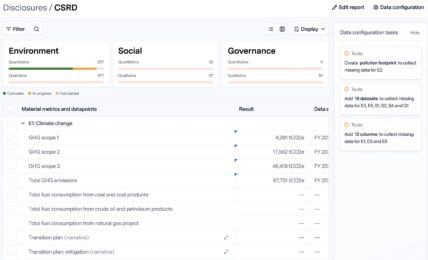Impact investing assets under management worldwide have reached $1.164 trillion, according to an estimate in a new report by the Global Impact Investing Network (GIIN), surpassing the trillion-dollar mark for the first time.
Founded in 2009, the GIIN is a nonprofit organization dedicated to increasing the scale and effectiveness of impact investing, with a network of more than 20,000 investors and leaders. For its new report, “2022: Sizing the Impact Investing Market,” the GIIN screened and analyzed data from over 3,000 public and private market asset owners and managers.
According to GIIN co-founder Amit Bouri, the development of an estimate of market size for impact investing aims to enable industry players to compare impact investing to related sustainability-focused investment approaches, track the volume of capital flows into impact investing, and evaluate the changing nature of the market.
Commenting on the “undeniable momentum” of the market, Bouri said:
“While the market growth to $1.164 trillion serves as a very positive sign for impact investing, it is also a call for further action. Investing more capital with an intentional focus to generate positive impact is required right now if we truly want to meet the UN Sustainable Development Goals by 2030 and achieve net zero emissions by 2050.”
The report highlights some of the key drivers of the impact investing market’s momentum, including the rapid growth of the green bond market. Since first launching in 2008, green bonds, used to finance environmental projects and initiatives, have soared, with annual issuance reaching well over $550 billion last year, and the success of the instruments driving the development of several other sustainable finance products, including blue, transition, sustainable, and social bonds to combine for over $1 trillion of annual issuance. The report notes that it does not qualify all green bonds as impact investments, as many are held by investors without a specific impact investment strategy, and due to holders and issuers not measuring and managing their investments’ impact.
Another driver outlined in the report is the confluence of a surge in cash reserves by companies during the pandemic, with growing shareholder pressure to invest those reserves productively, coupled with stakeholder demands for companies to address issues including climate change and social inequity.
The GIIN report was produced with financial support from investment manager Nuveen. Amy O’Brien, Head of Responsible Investing at Nuveen, said:
“As responsible investing moves into the mainstream, in addition to their expectation that robust ESG principles are being applied to portfolios, many investors are also embracing impact investing, which seeks to produce direct benefits for people and the planet while generating market-rate returns.”
Bouri added:
“The results of this market sizing study should fill us with optimism and determination. We should be optimistic about the capacity of the impact investing market to enact positive change, and we must be determined to continue to grow the use of impact investing as a critical strategy to address the challenges of our time.”
Click here to access the GIIN report.
The post Impact Investing Passes $1 Trillion for First Time: Report appeared first on ESG Today.


